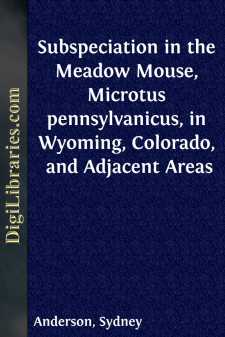Categories
- Antiques & Collectibles 13
- Architecture 36
- Art 48
- Bibles 22
- Biography & Autobiography 813
- Body, Mind & Spirit 142
- Business & Economics 28
- Children's Books 14
- Children's Fiction 11
- Computers 4
- Cooking 94
- Crafts & Hobbies 4
- Drama 346
- Education 46
- Family & Relationships 57
- Fiction 11829
- Games 19
- Gardening 17
- Health & Fitness 34
- History 1377
- House & Home 1
- Humor 147
- Juvenile Fiction 1873
- Juvenile Nonfiction 202
- Language Arts & Disciplines 88
- Law 16
- Literary Collections 686
- Literary Criticism 179
- Mathematics 13
- Medical 41
- Music 40
- Nature 179
- Non-Classifiable 1768
- Performing Arts 7
- Periodicals 1453
- Philosophy 64
- Photography 2
- Poetry 896
- Political Science 203
- Psychology 42
- Reference 154
- Religion 513
- Science 126
- Self-Help 84
- Social Science 81
- Sports & Recreation 34
- Study Aids 3
- Technology & Engineering 59
- Transportation 23
- Travel 463
- True Crime 29
Sydney Anderson
The author has not yet completed their profile.
Author's Books:
Sort by:
by:
Sydney Anderson
Tropical fruit-eating bats of the genus Artibeus reach their northern limits on the lowlands of the eastern and western coasts of México. Recent students have placed the species of Mexican Artibeus in two groups; one includes bats of small size and one includes bats of large size (Dalquest, 1953:61; Lukens and Davis, 1957:6; and Davis, 1958:163). Three of the small species (A. cinereus phaeotis, A....
more...
by:
Sydney Anderson
The Grand Mesa of Colorado is a westward extension of the mountains of central Colorado, standing more than five thousand feet above the valleys of the Colorado and the Gunnison rivers. To certain montane mammals the mesa is a peninsula of cool, moist, forest surrounded by inhospitable, hot, dry, barren lowland. Few mammals previously have been preserved or reported from the Grand Mesa. Of the species...
more...
by:
Sydney Anderson
INTRODUCTION A person standing on the North Rim of the Mesa Verde in southwestern Colorado sees a vast green plain sloping away to the south. The plain drops 2000 feet in ten miles. On a clear evening, before the sun reaches the horizon, the rays of the sun are reflected from great sandstone cliffs forming the walls of deep canyons that appear as crooked yellow lines in the distance. Canyon after...
more...
by:
Sydney Anderson
Since 1952 when Hooper's review of Latin American harvest mice was published, collectors from the Museum of Natural History of the University of Kansas have visited several countries in Central America, and have obtained many additional specimens. Among these we find a new subspecies of Reithrodontomys fulvescens from Nicaragua, significant extensions of known geographic range for several other...
more...
by:
Sydney Anderson
Microtus montanus reaches the eastern limits of its geographic distribution in Wyoming and Colorado. There the mountains, but in general not the lowlands, are occupied by this species. A certain minimum of moisture may be of direct importance to the mouse and certainly is indirectly important, because certain hydrophytic or mesophytic grasses used by the mouse for food, for protection from enemies, and...
more...
by:
Sydney Anderson
INTRODUCTION In the region including Wyoming and Colorado, Microtus pennsylvanicus has been divided into two subspecies: the pale M. p. insperatus (J. A. Allen) inhabits the Black Hills of the northeasternmost part of Wyoming; the dark M. p. modestus (Baird) inhabits extensive areas in both Wyoming and Colorado. Initial examination of Microtus pennsylvanicus revealed that specimens from the Big Horn...
more...
by:
Sydney Anderson
Incidental to studies of speciation of North American mammals, made possible by assistance from the National Science Foundation and the Kansas University Endowment Association, a number of bats have been taken beyond the limits of their previously known geographic ranges. Pending the completion of more detailed faunal accounts, these notes are published so that the distributional records will be...
more...








